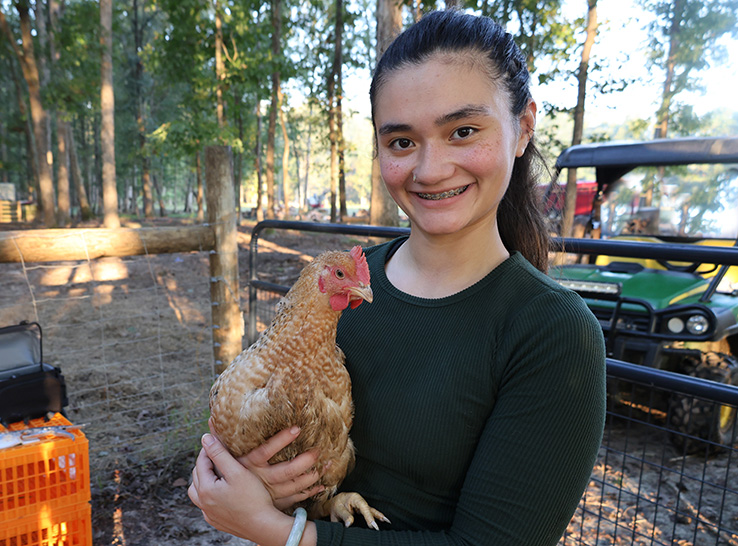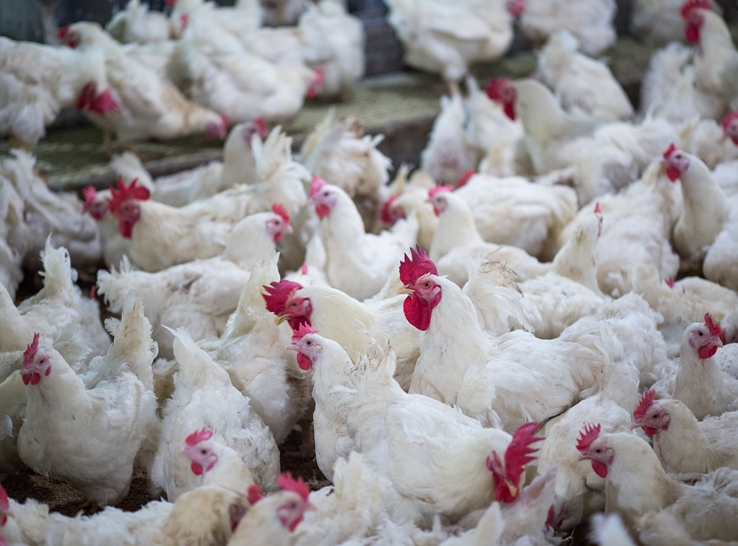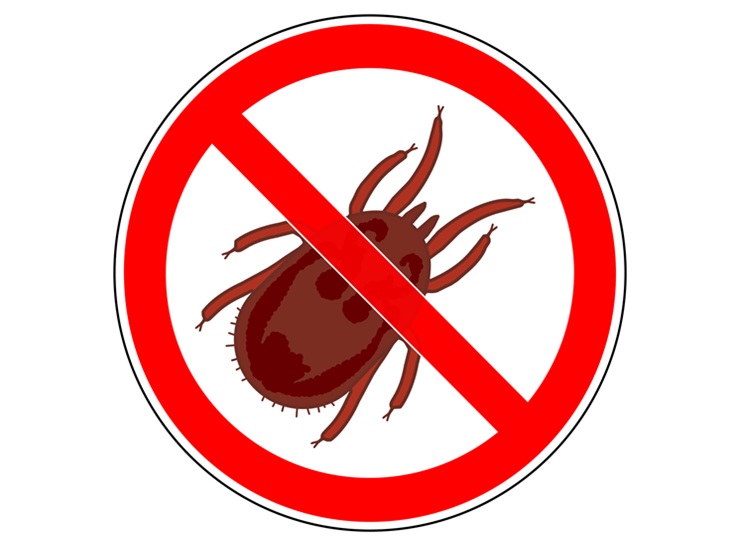A North Carolina State University (NCSU) study comparing the growth performance and mortalities of fast- and slow-growing strains of broilers reared in silvopastures and indoor facilities demonstrated superior performance of fast-growing broilers in both housing types. However, overall results were unexpectedly mixed due to a significant weather event, suggesting the need for more research on silvopasture.
A silvopasture system provides a natural habitat with trees, shrubbery and vegetation for poultry production. Woody vegetation can also provide another source of income.
“Slower growth rates and alternative housing systems are management strategies presumed to improve broiler welfare,” reported Athena He-DeMontaron, NCSU graduate student and the study’s lead researcher. “However, their effect on broiler productivity is understudied, particularly in the US.”
He-DeMontaron presented the complete study details at the 2025 International Poultry Scientific Forum.
Testing outdoor welfare benefits
“Studies have found evidence that slow-growing strains demonstrate improved welfare outcomes related to mobility and enrichment use,” she explained. “The research has led to increased interest in slow-growing strains and retail-driven initiatives like the Better Chicken Commitment that calls for growers to adopt breeds that demonstrate higher welfare outcomes.
“There’s also an interest in outdoor rearing systems to provide birds with more behavioral opportunities and environmental complexities,” she added.
However, He-DeMontaron explained, research on this type of environment is limited in the US, with its varying climates and geography.
Study set-up
The research team hypothesized that the fast-growing strain would be more efficient in both housing types than the slow-growing strain, and that mortalities in the slow-growing strain would be lower in the silvopasture environment than indoors.
They randomly placed 500 Ross 708 (fast-growing) and 500 SASSO (slow-growing) male chicks in indoor conventional or silvopasture housing, which featured trees for natural shade, shrubs and forages.
Fifty chicks were placed in a pen, with five pens used per strain and per system.
Broilers were given outdoor access during daylight hours.
To achieve a target weight of 6 pounds (2.7 kg) per bird, the Ross 708 birds were reared to 6 weeks and the Sasso to 8 weeks.
Pens in both environments had two drinkers, two feeders and the same amount of indoor space per bird. The silvopasture chicks had additional space on the range.
All birds were fed the same diet: a starter from day 1 to 14, a grower from day 15 to 28 and a finisher from day 29 to 32. The SASSOs were fed a secondary finisher diet from day 43 to 56.
The researchers weighed the feed and recorded every time it was issued. Refusal was calculated by weighing feeders before starting a new diet phase.
They also monitored all environments twice a day for mortalities. A bird was culled when it lost 15% of its normal bodyweight, could not reach feed or water or was severely injured from pecking. Dead bird weights were recorded.
Fast-growing strain excelled
“Regardless of environment, the Ross 708, our fast-growing strain, had a higher average daily gain (ADG) at every age than the SASSOs,” He-DeMontaron explained. “And that ADG was nearly double that of the SASSOs, clearly evidencing their fast-growing classification.
“The SASSO birds also had a greater feed conversion rate (FCR) than the Ross, with a mean of 1.57 for the SASSO and 1.28 for the Ross,” she continued. “But according to the breed guides, both the Rosses and the SASSOs outperformed their estimated FCR at their respective ages.”
The researchers also observed that the indoor birds had greater feed intake than the outdoor birds, particularly at older ages.
On average, indoor-reared birds were more efficient, as indicated by a lower FCR (1.31) than outdoor birds (1.53). He-DeMontaron suggested that the silvopasture birds could supplement their diet with forages. However, these birds can have a higher energy expenditure from being on the range and foraging.
Mortality affected by weather
“We had mortality of about one bird per pen indoors and about three birds per pen outdoors,” He-DeMontaron said. “The top mortality reason in our indoor environment was ‘found dead,’ and the top reason in the outdoor environment was ‘rain and low temperature.’
“Weather was a main driver of mortality in the silvopasture,” she continued. “Our birds experienced 12 to 14 inches of rainfall in 1 week. The puddles and flooding caused the birds to pile up on each other to avoid getting wet, which increased incidences of being wet and exposed to colder temperatures.
“So, contrary to our hypothesis, strain did not affect mortality [because] a weather event leveled the playing field between strains.”
For future research on silvopasture systems, He-DeMontaron suggested investigating ways to mitigate variability in outdoor environments, including flood prevention. Options include land leveling, increased ground cover and vegetation, and drainage measures.





